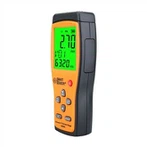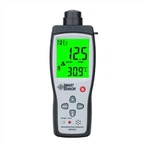Switching power supply start voltage adjustment power supply range
Power supply range of switching power supply
The power supply range of the switching power supply in PWM mode is determined by the maximum duty cycle and the minimum duty cycle.
Maximum duty cycle limitation: single-ended power supply ensures magnetic flux reset, half-bridge and full-bridge leave dead time, switch duty cycle is usually less than 0.5, and the general design is 0.45;
The minimum duty cycle, affected by the switch off time, the minimum duty cycle cannot be zero, the off time of the bipolar switch is >500nS, and the MOSFET can be as small as tens of nS, if both work at 50K frequency, Then the turn-off time of the bipolar switch tube has reached 1.5% of the cycle. In order to ensure a certain efficiency, the power supply design requires the turn-off time to be less than 1/5 of the pulse width. If a bipolar switch tube with a tf of 500nS is used, the minimum The pulse width is required to be 2.5uS, and the duty cycle is 0.125, that is, the change rate of the duty cycle is 0.45/0.125=3.6 (times), and the acceptable input voltage change rate is 3.6 times.
Diagnosis Method of Fault of Switching Tube of Frequency Converter Switching Power Supply
The frequency conversion speed control system is composed of two parts, the frequency converter and the motor, but the failure probability of the frequency converter part is higher. An important factor leading to the high failure rate of the frequency converter is the frequent failure of the switch tube. There are mainly four methods for fault diagnosis of switching tubes: expert system method, voltage detection method, intelligent algorithm, and current detection method.
(1) The expert system method refers to the experience of fault diagnosis as the basis, combined with the specific situation, enumerating possible faults, continuously enriching and summarizing, and finally forming a systematic knowledge base. Then when the fault occurs again, the diagnosis can be made by querying the knowledge base, but the disadvantage of this diagnosis method is that the knowledge base cannot be established completely and completely.
(2) The voltage detection method is to diagnose the fault by examining the deviation between the phase voltage, line voltage or neutral point voltage of the motor when the inverter is faulty and the normal state.
(3) Intelligent algorithm refers to the general optimization algorithm. In the frequency conversion speed control system, the intelligent algorithm mainly includes artificial neural network, wavelet analysis and fuzzy control.
(4) Current detection method, this method is mainly to normalize the current by grasping the current value, so as to control the switch tube.
After the switching tube fails, there are two ways to recover: one is to use redundant control; the other is fault-tolerant control. Redundant control is used in systems with high reliability. That is, during operation, when a switch tube fails, redundant switches are used. Fault-tolerant control is to connect each phase bridge arm to the motor through a relay. During normal operation, the motor neutral phase relay is open and this phase is not activated. When the switching tube of a certain section fails during operation, the relay of this phase is disconnected, so that the loss caused by the sudden failure can be minimized.






